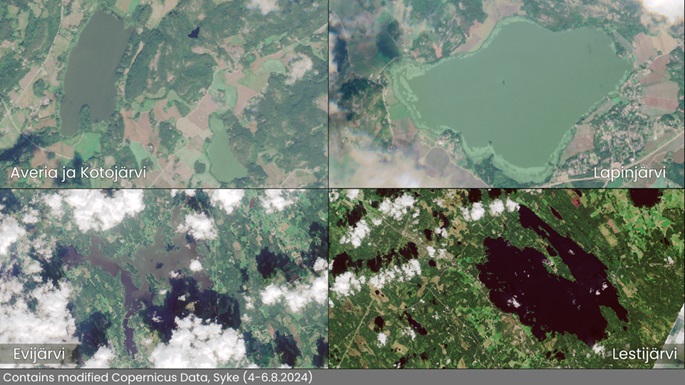Blue-green algae rises in inland waters, Southwest coast
Published : 09 Aug 2024, 04:05
Updated : 09 Aug 2024, 04:16
More blue-green algae have been detected in inland waters and coastal areas than last week, said Finnish Environment Institute (SYKE) in a press release on Thursday.
Inland water observations have been made especially in the southern and western parts of the country, as well as along Central Finland.
Slightly more blue-green algae have also been observed on the coast of Southwest Finland, compared to last week.
In the open sea, the blooms have become stronger on the south side of the Archipelago Sea.
The weekly reports on the blue-green algae situation of the Finnish Environment Institute ended on 8 August, but the national monitoring of blue-green algae will continue until 30 September.
Blue-green algae typically still occur in inland waters and sea areas well into the autumn.
Going forward, the Finnish Environment Institute will provide information on the blue-green algae situation, if necessary, and a summary of the blue-green algae monitoring will be published, on 29 August 2024.
SYKE observes the cyanobacteria occurrence as part of the monitoring of the state of the environment in Finland
The national cyanobacterial monitoring is carried out as part of the monitoring of the state of the environment in cooperation with the Centres for Economic Development, Transport and the Environment, municipal environmental and health authorities, and the SYKE. Finnish Rotary Clubs are also actively involved in nationwide cyanobacterial monitoring.
The cyanobacterial monitoring is based on the monitoring of cyanobacterial deposits in surface water.
The intention is to provide an overview of the cyanobacterial situation in different water bodies.
The monitoring includes about 400 permanent observation sites across the country on inland and coastal waters and in the archipelago.
Information on the cyanobacterial situation in the open sea areas is mainly obtained from satellite images, but also from the Finnish Border Guard, the marine research vessel Aranda, the optical device located at the Utö Atmospheric and Marine Research Station, as well as cruise and merchant ships (MS Finnmaid and MS Silja Serenade). The drift forecasts for cyanobacterial rafts in open sea areas are prepared in cooperation with the Finnish Meteorological Institute's Maritime Services.


